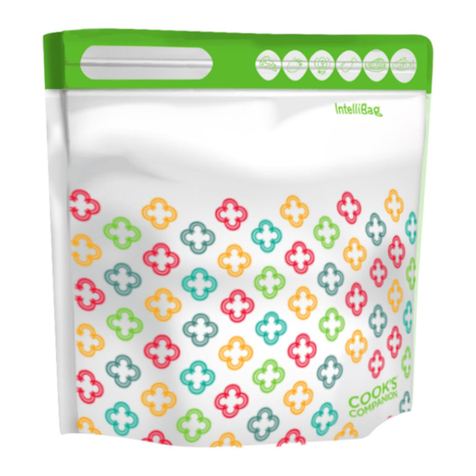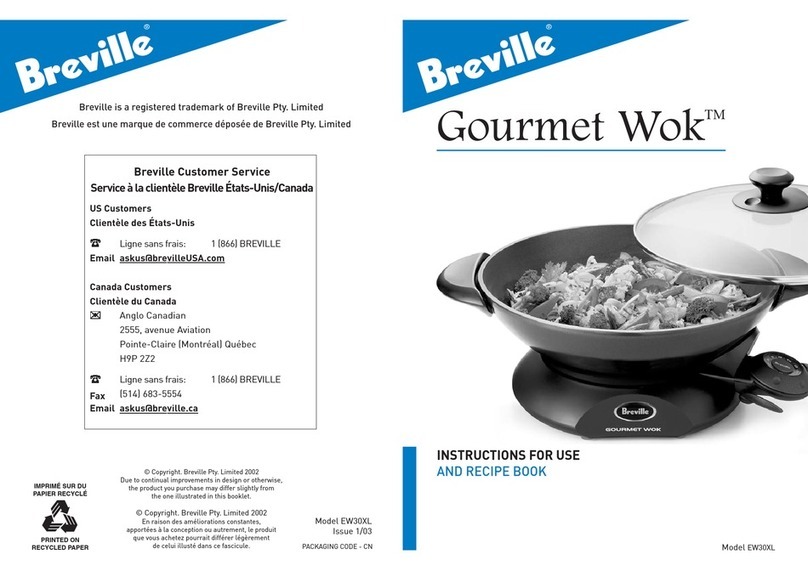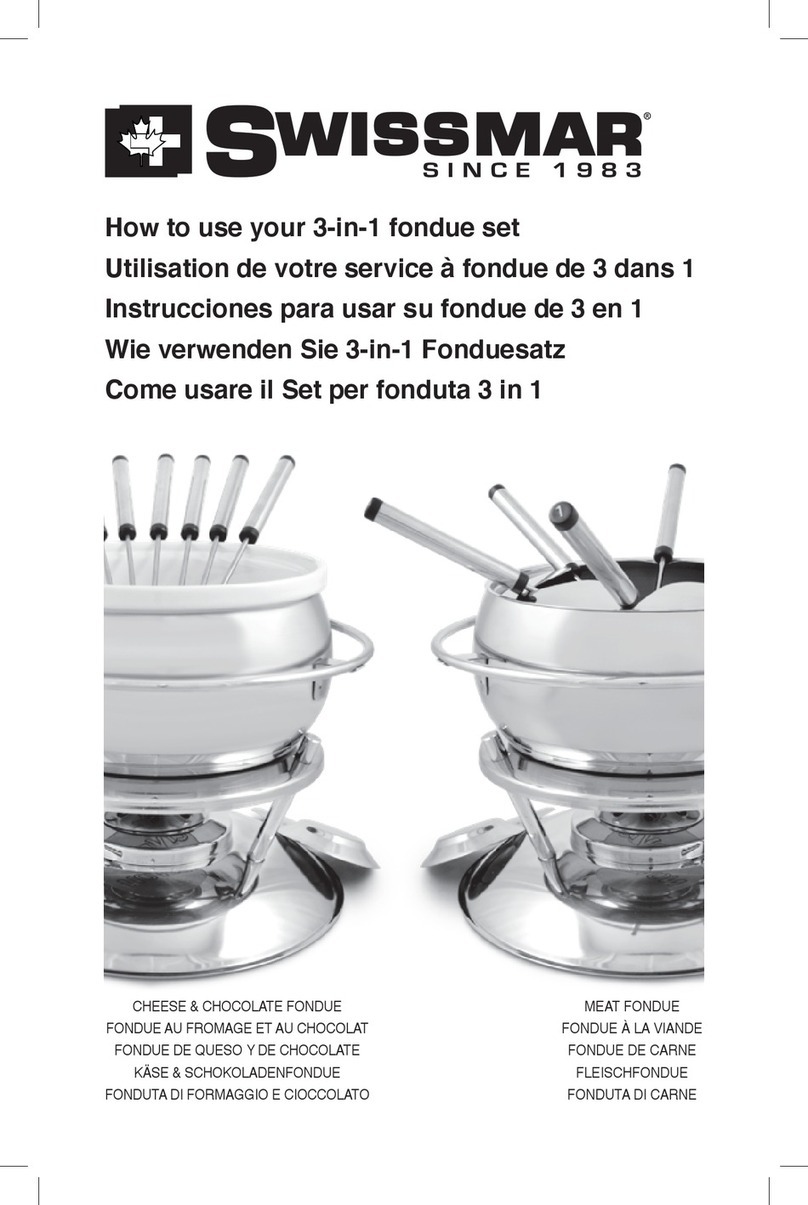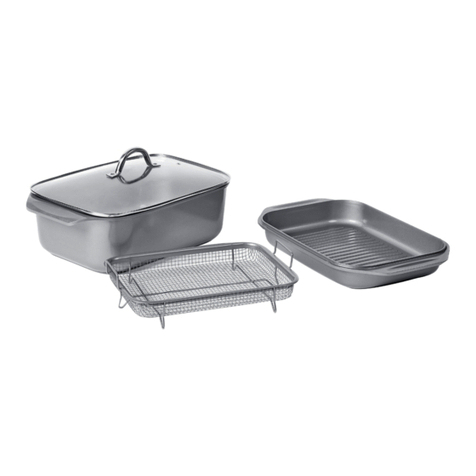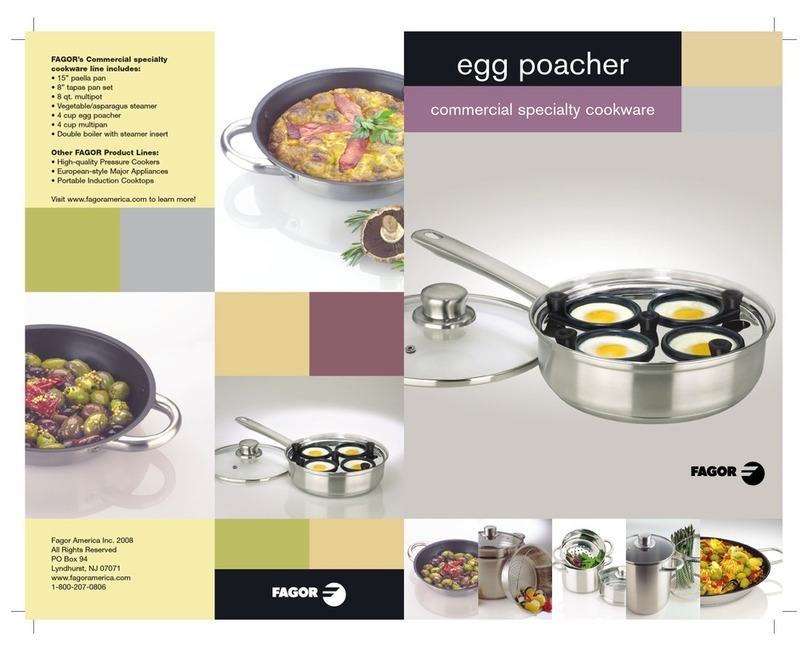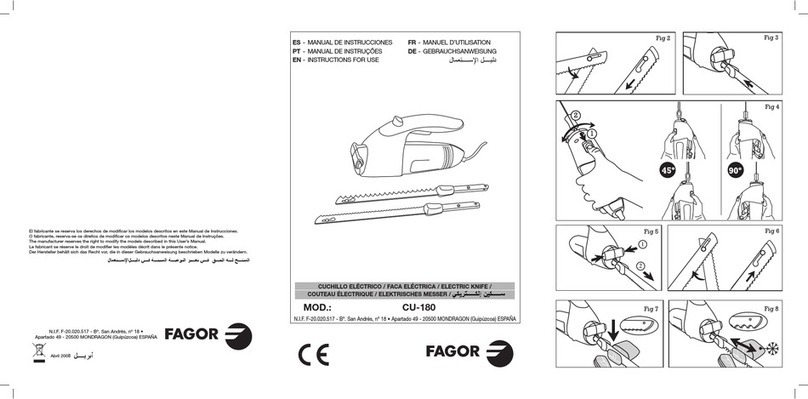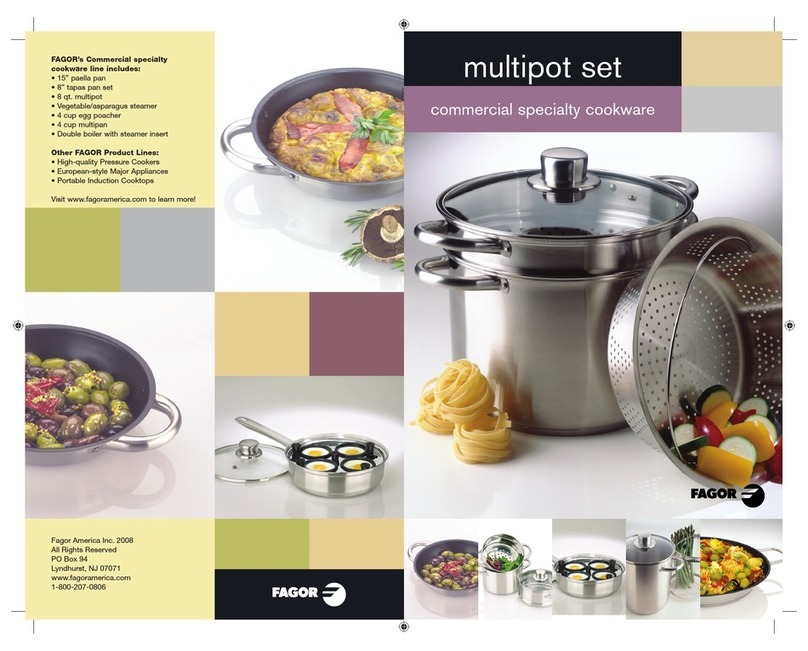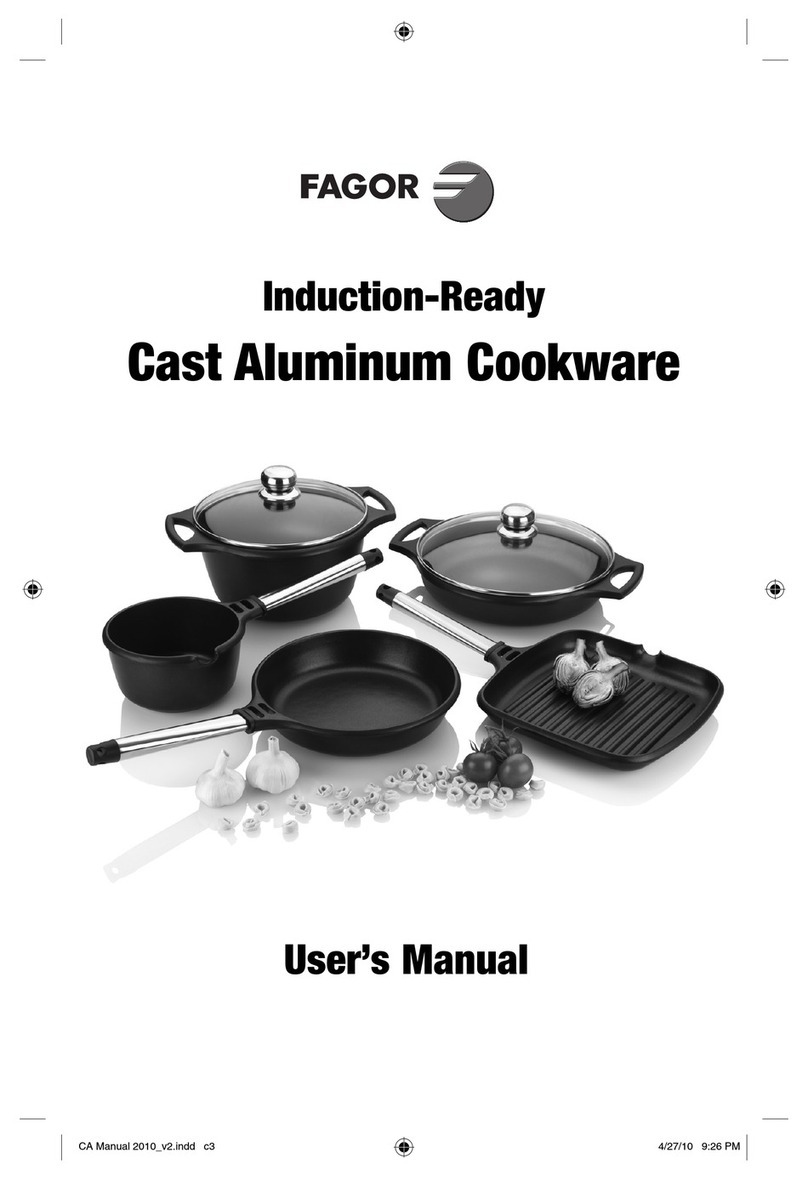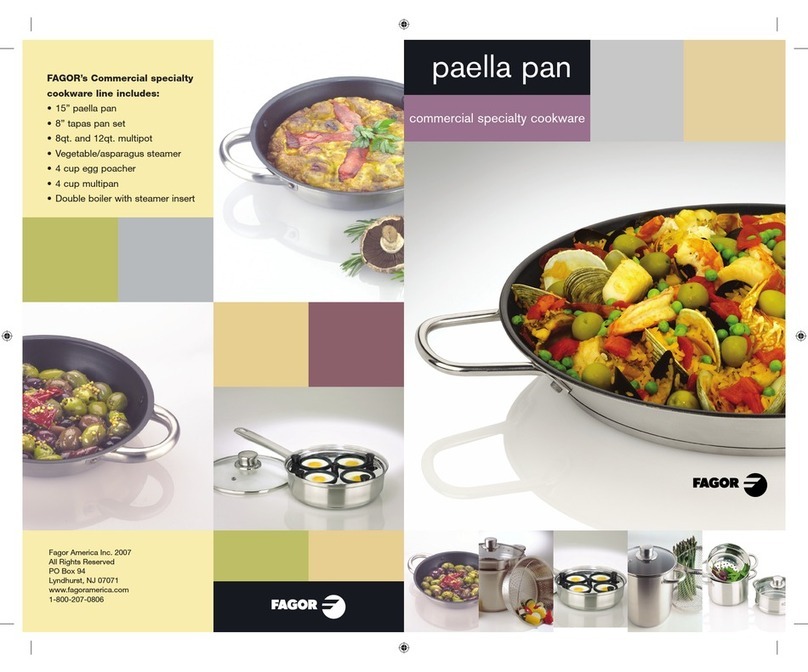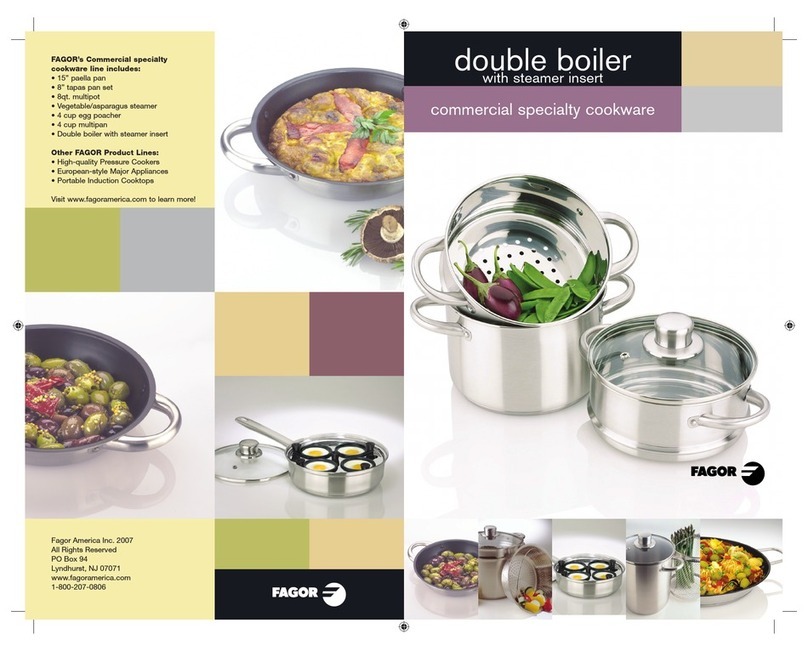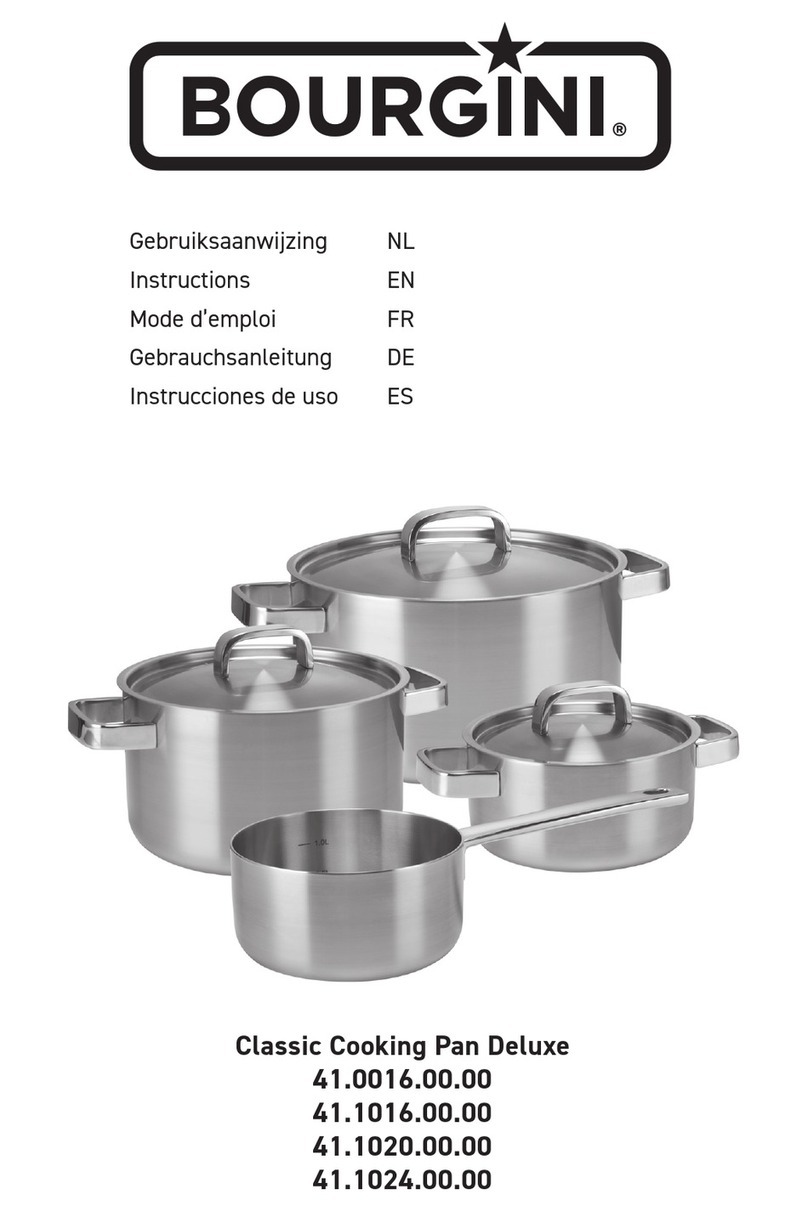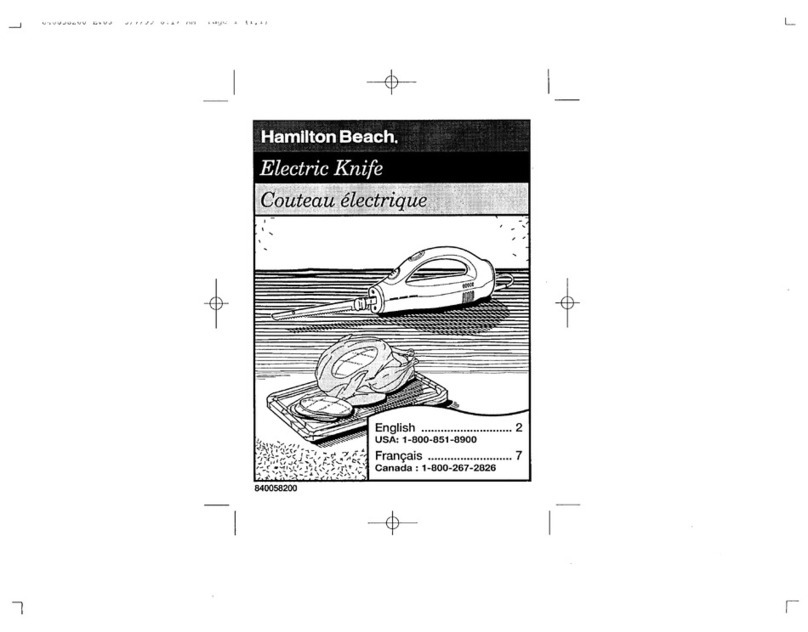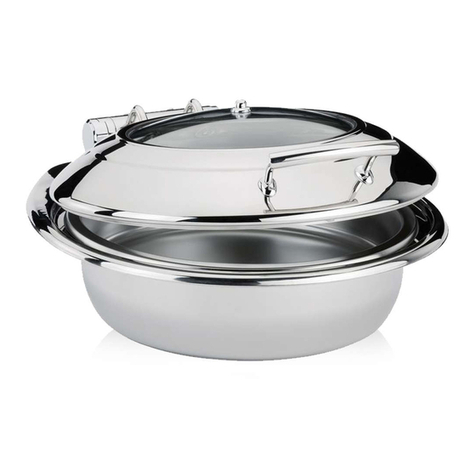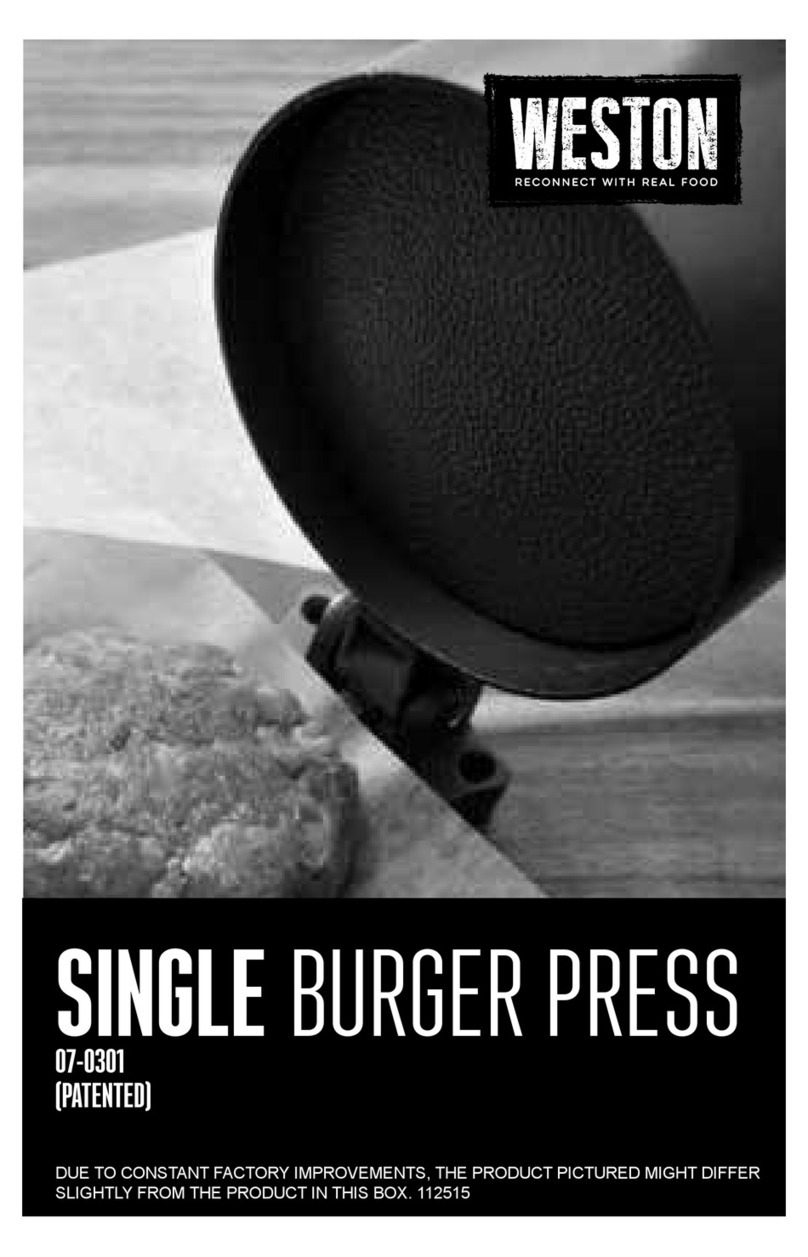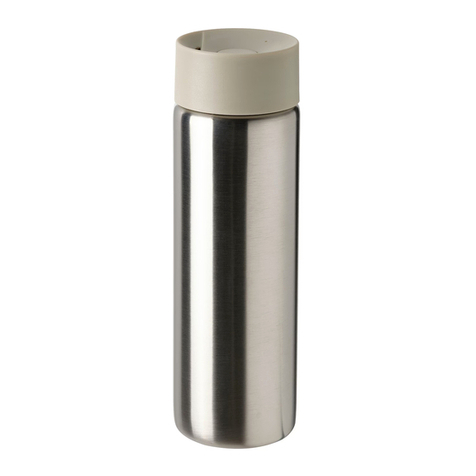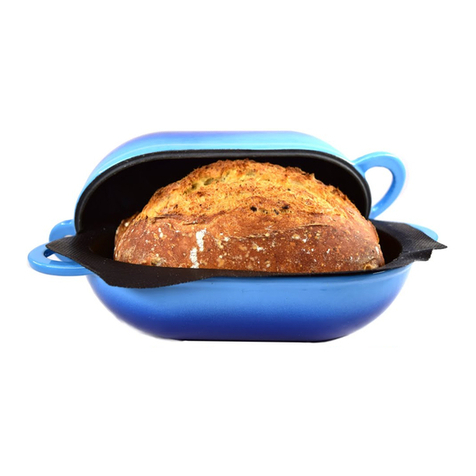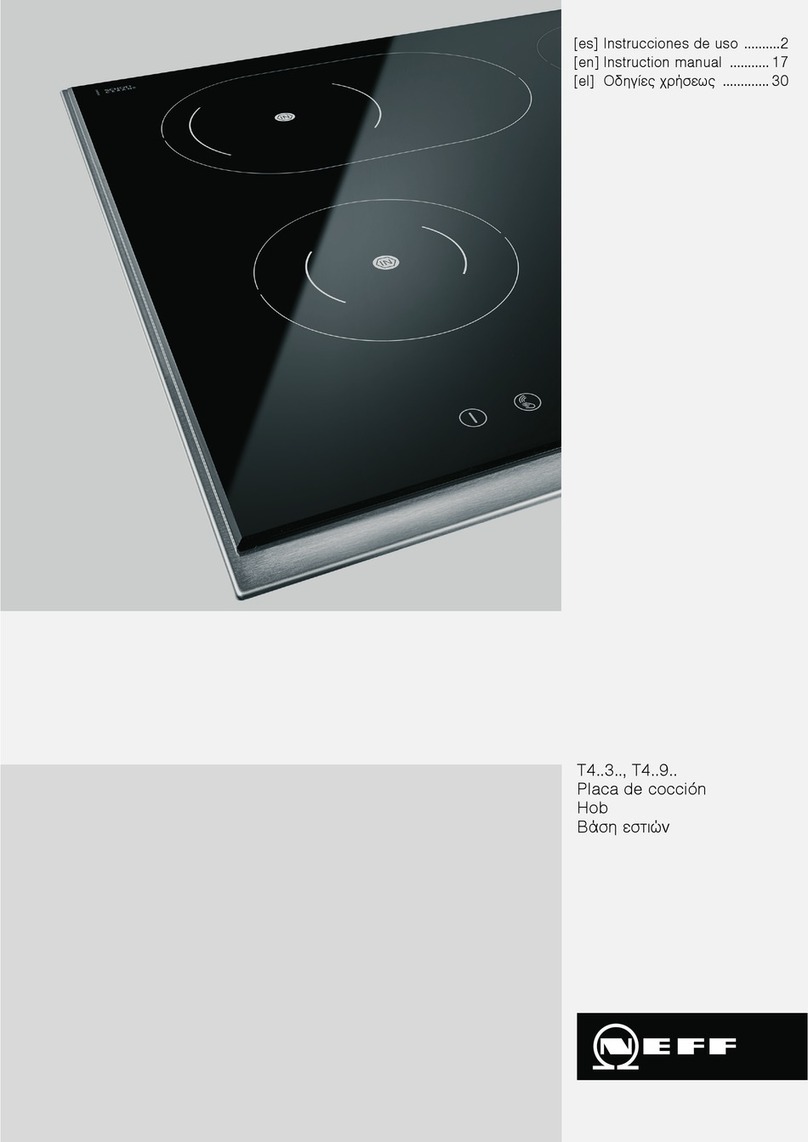— 11 —— 10 —
USING THE MULTIPOT FOR COOKING PASTA:
For each 8 oz dry Pasta, bring 3 quarts (1qt=4 cups) of hot water to a rapid
boil, covering the pot to speed up cooking time. It is important that there is
plenty of room in the pot for the water to circulate freely to keep the pasta
from sticking together.
Place the pasta in the tall pasta basket insert and lower into boiling water.
Cover the pot with the glass lid until the water returns to a boil.
Once the water returns to a boil, uncover and cook the pasta according to
the instructions on the box. (Different varieties of pasta cook for different
lengths of time)
To test for doneness, take a piece of pasta out of the pot with a large spoon
and take a bite. Most people prefer to eat pasta al dente, cooked through
but still a bit chewy.
Remove pasta basket from water, do not rinse unless you are cooling it for a
salad. Otherwise, serve immediately.
USING THE MULTIPOT AS A STOCK POT:
Remove both inserts and you now have a restaurant style 8 or 12qt stockpot.
This pot is ideal for simmering soups and stocks, poaching poultry, cooking
pasta, and making a big batch of chili. It is ideal for preparing enough for a
larger family or entertaining a large group.
San Francisco Style Cioppino
1/4 cup olive oil or salad oil
1 large onion, chopped
2 cloves garlic, minced or pressed
1 large green bell pepper, seeded and chopped
1/3 cup chopped parsley
1 large can (15 oz.) tomato sauce
1 large can (28 oz.) tomatoes
1 cup dry red or white wine
1 bay leaf
1 teaspoon dry basil leaves
1/2 teaspoon dry oregano leaves
12 small hard-shell clams in shell, suitable for steaming, scrubbed
1 pound large shrimp (under 30 per lb.) shelled and deveined
2 cooked large Dungeness crabs (about 2 lbs. each). cleaned and cracked
Directions:
In the 8 or 12 qt pot, combine oil, onion, garlic, bell pepper and parsley. Cook
over medium heat, stirring often, until onion is soft (about 5 mins.). Stir in
tomato sauce, tomatoes (break up with a spoon) and their liquid, wine, bay leaf,
basil and oregano. Bring to a boil. Reduce heat, cover, and simmer for 20
minutes.
Add clams, shrimp and crabs. Cover and simmer until clams pop open and
shrimp are opaque when cut (about 20 more minutes). Ladle broth and
shellfish into 6 large soup bowls. Makes 6 servings.

